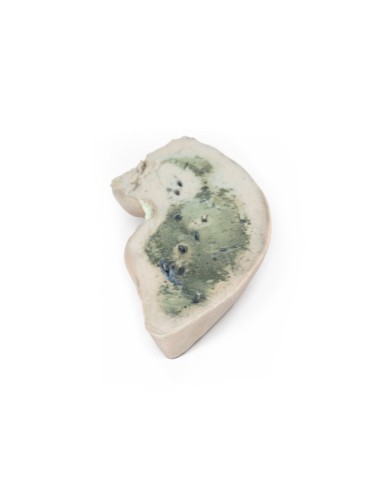Made in ultra-high resolution 3D printing in full color.
Fatty Liver - Erler Zimmer 3D anatomy Series MP2072
This dissection model highlighting a fatty liver is part of the exclusive Monash 3D anatomy series, a comprehensive series of human dissections reproduced with ultra-high resolution color 3D printing.
Clinical history.
No clinical details are available.
Pathology
A slice of liver reveals the characteristic yellow/grey, greasy appearance on one side. On the other side, the appearance is narrowed at the outer margin while the central area shows darker discoloration possibly due to cirrhosis. This is an example of fatty change in the liver.
Note
Causes of fat change (steatosis) or triglyceride accumulation in the liver include obesity, diabetes, alcohol abuse, starvation, Kwashiorkor, drugs, and toxins. Alcoholism is the most common cause in most communities.
What advantages does the Monash University anatomical dissection collection offer over plastic models or plastinated human specimens?
- Each body replica has been carefully created from selected patient X-ray data or human cadaver specimens selected by a highly trained team of anatomists at the Monash University Center for Human Anatomy Education to illustrate a range of clinically important areas of anatomy with a quality and fidelity that cannot be achieved with conventional anatomical models-this is real anatomy, not stylized anatomy.
- Each body replica has been rigorously checked by a team of highly trained anatomists at the Center for Human Anatomy Education, Monash University, to ensure the anatomical accuracy of the final product.
- The body replicas are not real human tissue and therefore not subject to any barriers of transportation, import, or use in educational facilities that do not hold an anatomy license. The Monash 3D Anatomy dissection series avoids these and other ethical issues that are raised when dealing with plastinated human remains.








